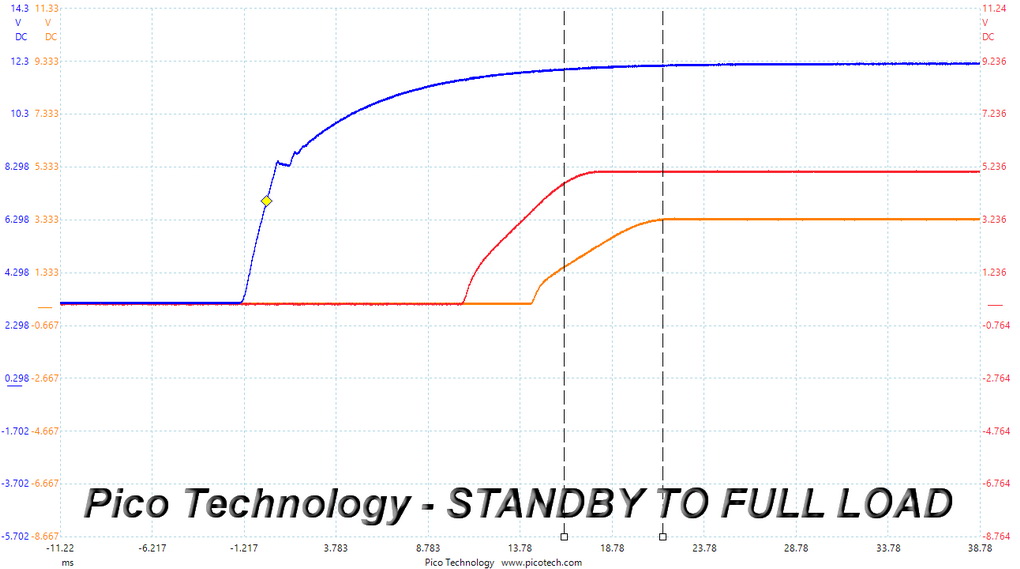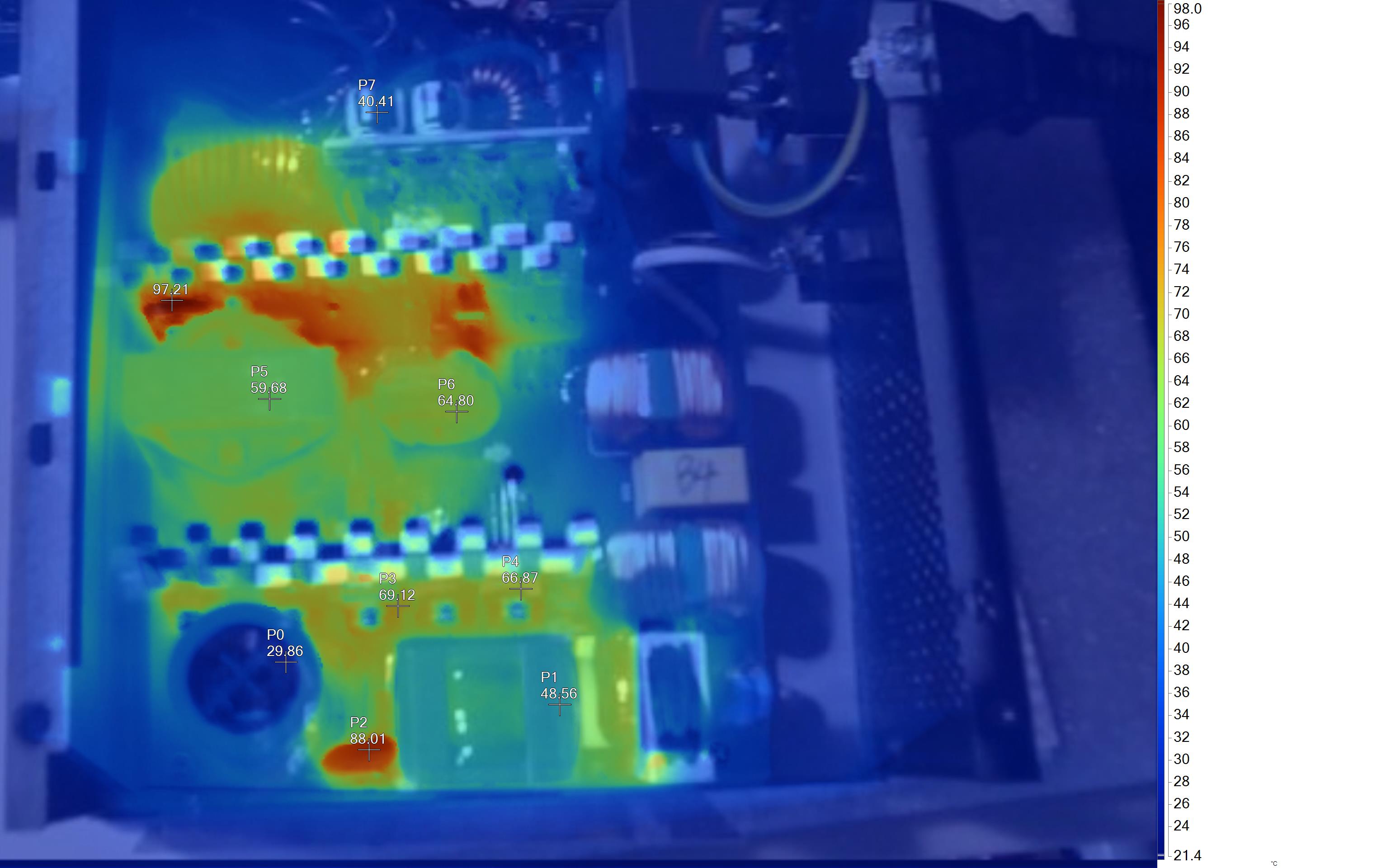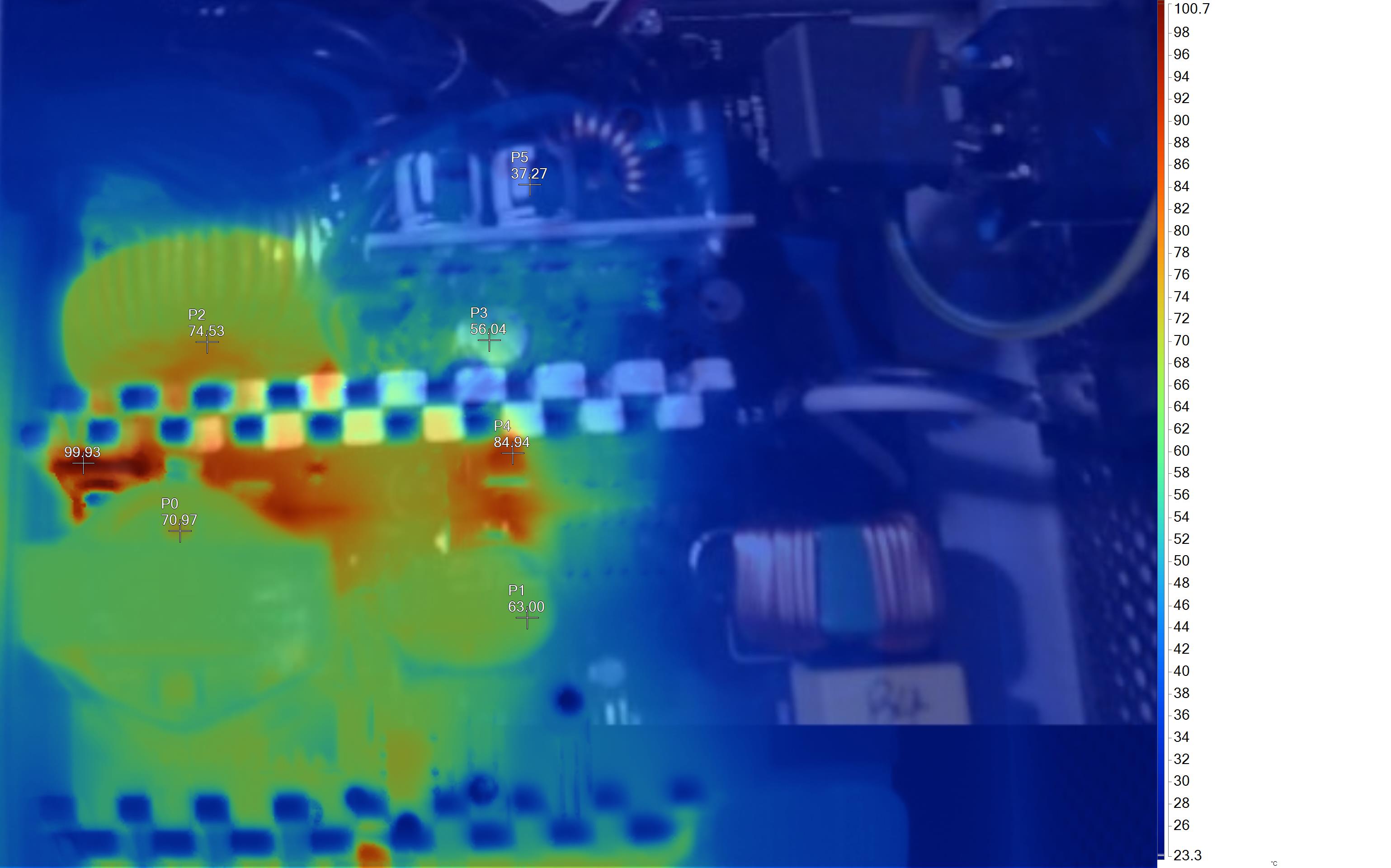Why you can trust Tom's Hardware
Protection Features
Check out our PSUs 101 article to learn more about PSU protection features.
|
Protection Features | Row 0 - Cell 1 |
|
OCP (Cold @ 22.5°C) |
12V: 64.2A (118.89%), 12.052V |
|
OCP (Hot @ 36°C) |
12V: 62.2A (115.19%), 12.056V |
|
OPP (Cold @ 21°C) |
821.9W (126.45%) |
|
OPP (Hot @ 38°C) |
772.35W (118.82%) |
|
OTP |
✓ (114°C @ 12V Heat Sink) |
|
SCP |
12V to Earth: ✓ |
|
PWR_OK |
Accurate but lower than 16ms |
|
NLO |
✓ |
|
SIP |
Surge: MOV |
OCP is correctly set at 12V, and the same goes for OPP. This is not the case, though, for the minor rails where the OCP triggering points are high.
All the rest protections are present and operate well. It would be great to see a bypass relay for the NTC thermistor, but this would increase the production cost.
DC Power Sequencing
According to Intel’s most recent Power Supply Design Guide (revision 1.4), the +12V and 5V outputs must be equal to or greater than the 3.3V rail at all times. Unfortunately, Intel doesn't mention why it is so important to always keep the 3.3V rail's voltage lower than the levels of the other two outputs.

DC Power Sequencing Scope Shots


No problems here since the 3.3V rail is always lower than the other two.
Cross Load Tests
To generate the following charts, we set our loaders to auto mode through custom-made software before trying more than 25,000 possible load combinations with the +12V, 5V, and 3.3V rails. The deviations in each of the charts below are calculated by taking the nominal values of the rails (12V, 5V, and 3.3V) as point zero. The ambient temperature during testing was between 30 to 32 degrees Celsius (86 to 89.6 degrees Fahrenheit).
Load Regulation Charts

Load Regulation Graphs


Efficiency Graph
Ripple Graphs
The lower the power supply's ripple, the more stable the system will be and less stress will also be applied to its components.
Get Tom's Hardware's best news and in-depth reviews, straight to your inbox.

Ripple Suppression Graphs



Infrared Images
We apply a half-load for 10 minutes with the PSU's top cover and cooling fan removed before taking photos with a modified FLIR E4 camera able to deliver an IR resolution of 320x240 (76,800 pixels).

IR Images





The internal temperatures are low. The bridge rectifier goes up to 72 degrees Celsius while the NTC thermistor gets even hotter to minimize its resistance.
MORE: Best Power Supplies
MORE: How We Test Power Supplies
MORE: All Power Supply Content
Current page: Protection Features, DC Power Sequencing, Cross-Load Tests and Infrared Images
Prev Page Load Regulation, Hold-Up Time, Inrush & Leakage Current, Efficiency and Noise Next Page Transient Response Tests, Timing Tests, Ripple Measurements and EMC Pre-Compliance Testing
Aris Mpitziopoulos is a contributing editor at Tom's Hardware, covering PSUs.
-
maxamillionfeettall Nice! So both the 750w and 650w units have the elite secondary caps. Makes me wonder what the 550w version has since the 450w version uses capxon.Reply
The FDB fan is a big plus, kudos for that.
